Rococo Revival Art and Wall Décor: Adding Elegance to Spaces

Let me tell you about my first encounter with real Rococo Revival style – it was in this tiny antique shop tucked away in a historic district. There it was: this absolutely over-the-top gilded mirror that somehow managed to be both totally extra and completely perfect at the same time. I walked past it three times before finally admitting to myself that I was in love with something that looked like it belonged in a French palace. Talk about a design plot twist!
Here’s the thing about Rococo Revival – it’s like that friend who knows how to make an entrance without completely stealing the show (okay, maybe they steal the show a little). It’s got all the drama and elegance of its 18th-century inspiration, but guess what? It actually plays surprisingly well with modern spaces. Whether you’re looking to add just a touch of that old-world glamour or go full Marie Antoinette (minus the whole cake drama), there’s a way to make it work in your home.
In this guide, we’re diving deep into everything Rococo Revival – from those gorgeous mirrors that make your space feel like it goes on forever, to wall treatments that’ll have your guests doing double-takes. And don’t worry if the word “ornate” makes you a bit nervous (been there!). I’ll show you how to blend these pieces with your existing decor without making your home look like it’s auditioning for a period drama.
So grab your coffee (or champagne – we are talking Rococo, after all), and let’s explore how to bring some of that historical magic into your very modern life. Trust me, by the end of this, you’ll be looking at that inherited gilt mirror of yours in a whole new light!
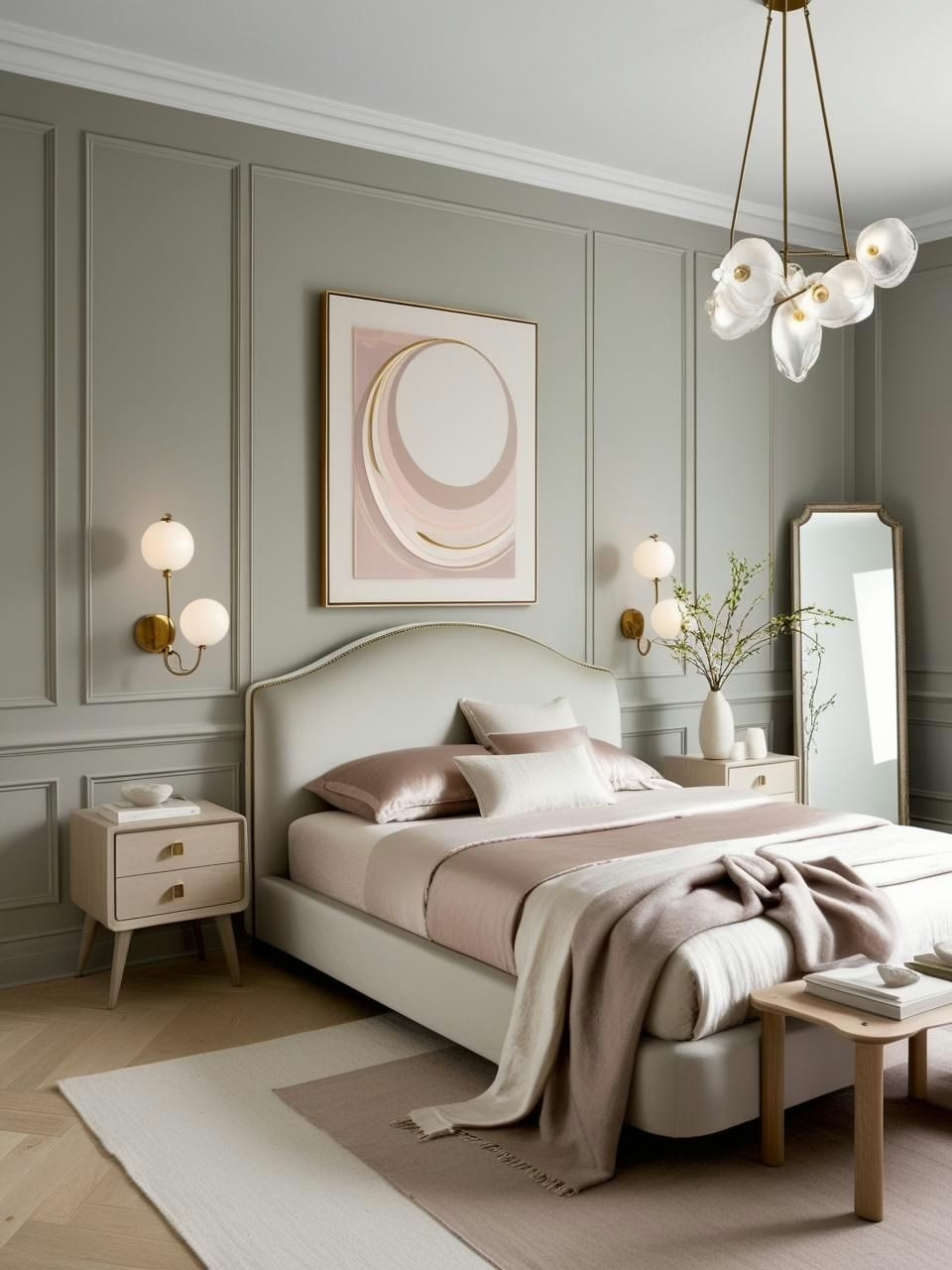
Your Shortcut to Effortless Luxury Resort Modern Style
12 refined color palettes designed to bring luxury, sophistication and harmony into your home.
What is Rococo Revival Art?
You know that moment when you walk into a room and it just feels like a warm hug of elegance? That’s often Rococo Revival working its magic. While it might sound fancy (okay, it is a bit fancy), this style is basically the design equivalent of dressing up in your grandmother’s vintage pearls with your favorite modern blazer.
A Quick Trip Back in Time
Rococo Revival emerged in the mid-19th century when designers basically said, “Hey, remember that gorgeous 18th-century French style? Let’s bring that back – but make it fresh.” They were inspired by the original Rococo period’s love of beauty and decoration, but gave it their own spin. Think of it as the first major design remix in history!
What Makes It So Special?
Picture the most detailed wedding cake you’ve ever seen, but make it furniture and art. Rococo Revival is all about those swooping curves and flowing lines that make your eye want to dance around the room. Here’s what makes it stand out:
- Curves for days: Remember how your art teacher said there are no straight lines in nature? Rococo Revival took that to heart. Every edge has a graceful curve or scroll.
- Nature’s greatest hits: Flowers, leaves, shells – if you’d find it in a gorgeous garden, you’ll probably spot it in Rococo Revival art. But make it fancy!
- Details on details on details: This style never met a blank space it didn’t want to decorate. It’s like maximalism before maximalism was cool.
Baroque vs. Rococo: Spot the Difference
Here’s where things get interesting – and yes, I used to mix these up all the time! Think of Baroque as the serious older sibling and Rococo as its more playful younger sister. While Baroque is all about drama and bold statements (imagine a power suit), Rococo Revival lightens things up with more delicate, intimate details (think cocktail party attire).
The easiest way to tell them apart? Baroque wants to impress you with its grandeur, while Rococo Revival wants to charm you with its elegance. It’s like the difference between a formal state dinner and an intimate soirée – both are fancy, but one lets you breathe a little easier.
Incorporating Rococo Revival pieces into your space doesn’t mean you have to go full French palace (unless that’s your thing – no judgment here!). Even a single ornate mirror or a beautifully curved chair can add that touch of elegance that makes a room feel special. It’s all about finding that sweet spot between sophistication and livability – something I think we’re all aiming for in our homes.
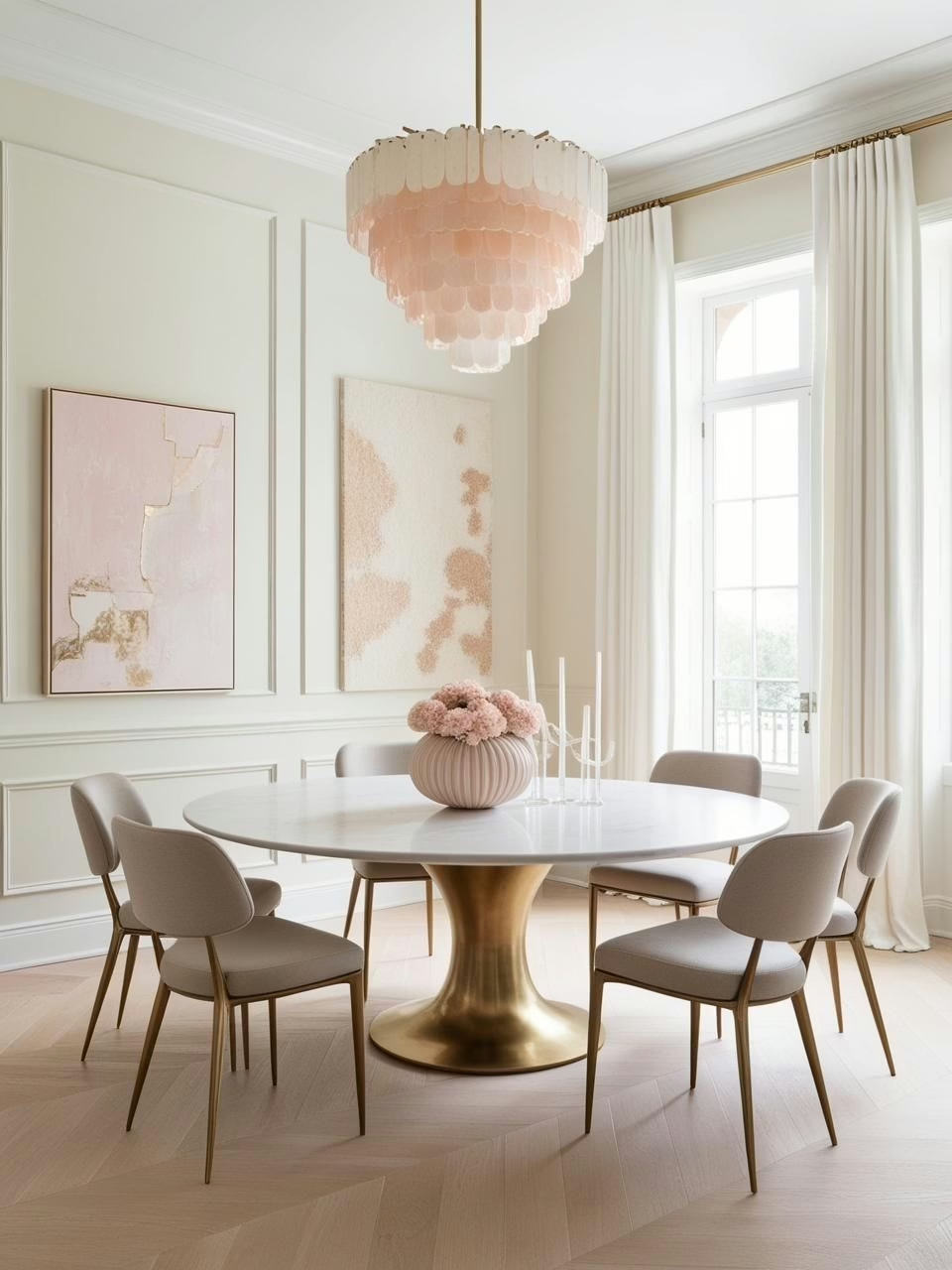
Your Shortcut to Effortless Cozy Minimalism Style
12 refined color palettes & implementation strategies designed to bring warmth, texture, and harmony into your home.
Choosing the Perfect Rococo Art for Your Walls
Let’s talk about adding some Rococo flair to your walls without making your space look like it’s auditioning for “Bridgerton.” Trust me, I’ve learned that there’s a sweet spot between “Marie Antoinette’s palace” and “modern home with character,” and I’m excited to share how to find it.
Size Really Does Matter
I remember that time I hung a tiny print on a massive wall and wondered why it looked lost. (We’ve all been there!) When it comes to Rococo art, here’s what I’ve discovered works:
- For statement walls, go big or go home – think 24×36 inches minimum. These pieces were made to command attention, so let them!
- In smaller spaces or as part of a gallery wall, 16×20 inches gives you that Rococo detail without overwhelming the room
- Pro tip: The more ornate the frame, the more space it needs to breathe. Give these beauties at least 6 inches of breathing room on all sides
Making Modern and Rococo Play Nice
You know that feeling when you find the perfect piece but worry it might be “too much” for your space? Here’s the thing – mixing Rococo with modern pieces creates this amazing tension that makes both styles shine. Some tried-and-true approaches:
- Pair an ornate Rococo-style painting with clean-lined furniture. It’s like wearing vintage jewelry with a modern outfit – it just works
- Try grouping Rococo pieces with contemporary black and white photography. The contrast is chef’s kiss
- Keep the wall color simple when the art is ornate. Think of it as letting your statement piece have its moment
Mixing Originals and Reproductions
Here’s a secret that took me way too long to learn: there’s absolutely nothing wrong with mixing high-end originals with quality reproductions. It’s all about how you use them:
- Place your showstopper original piece where it’ll get the most attention (think above a fireplace or at the end of a hallway)
- Use reproductions in supporting roles – they’re perfect for creating that layered look without breaking the bank
- Consider digital prints of Rococo patterns for smaller spaces or as part of a gallery wall. They give you the look without the heavyweight price tag
The key is to have fun with it! Remember, even the most sophisticated spaces have room for personality. Your home should tell your story, even if that story includes both an 18th-century-inspired portrait and a contemporary abstract piece. After all, isn’t that mix what makes spaces feel truly lived in and loved?
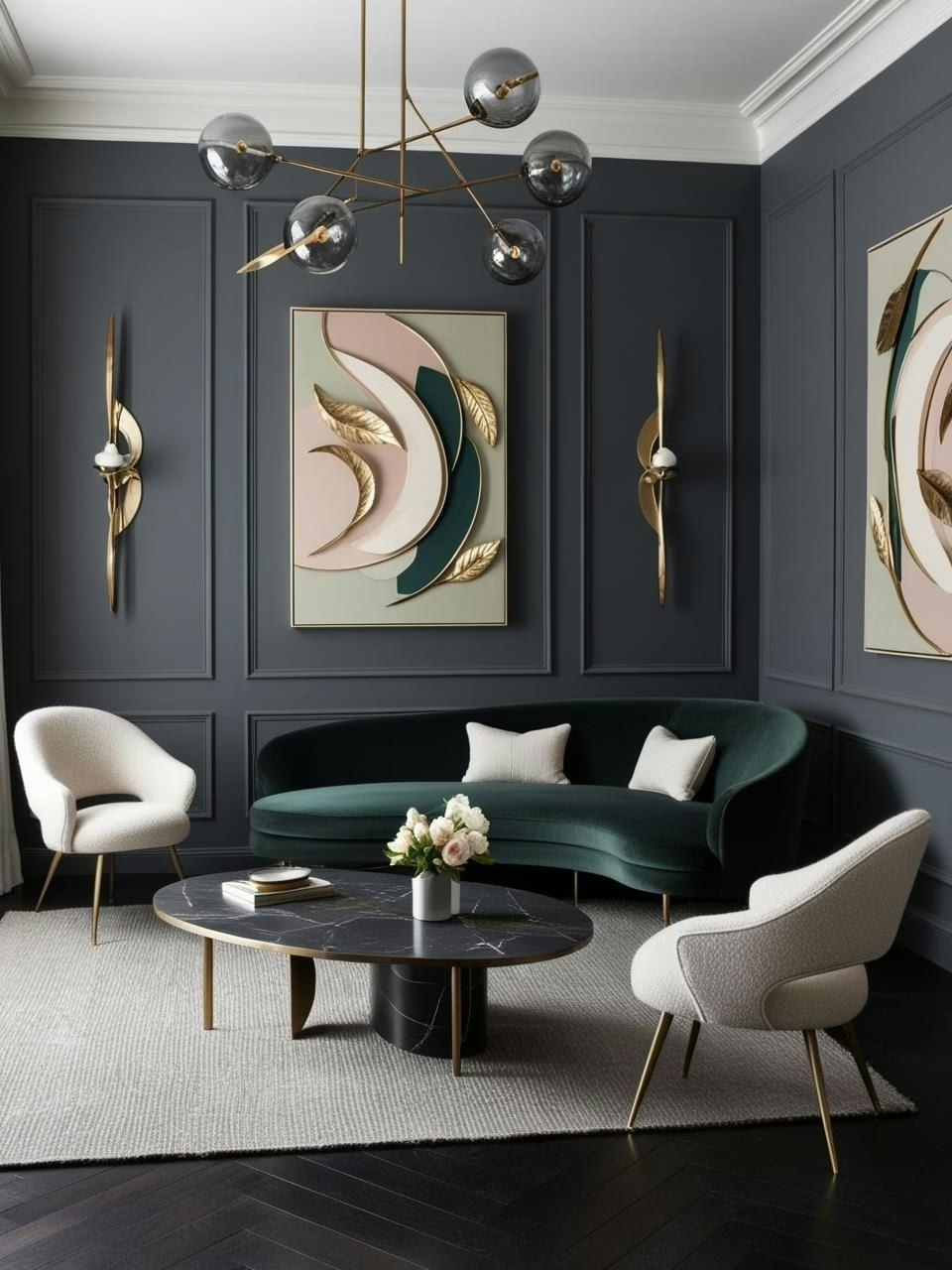
Styling Rococo Mirrors and Tapestries for Maximum Impact
Let’s talk about the power players of Rococo style – mirrors and tapestries. I’ll never forget the first time I helped install a massive gilded mirror. There we were, three people holding this gorgeous behemoth, when someone asked, “Wait, are we sure this is centered?” (Spoiler: it wasn’t). But that’s exactly the kind of experience that teaches you what really works!
Finding Your Perfect Mirror Match
You know that feeling when you walk into a room and something just catches your eye? That’s what a well-chosen Rococo mirror does. But here’s what I’ve learned about picking the right one:
- The frame is everything. Like, seriously everything. I once bought a mirror just because the frame was “kind of ornate” – rookie mistake! Look for those signature Rococo details: scrollwork, shell motifs, and those gorgeous curved edges
- About gilding: there’s a sweet spot between “subtle gleam” and “full-on disco ball.” Gold finishes come in different tones – some warm, some cool. Try to match the undertones of your existing metallics (yes, this matters – trust me on this one!)
- Size wise? Go bigger than you think. I can’t count how many times I’ve heard “I wish I’d gone with the larger size” (including from myself!)
The Magic of Tapestries
Can we talk about tapestries for a minute? They’re like the Swiss Army knife of wall decor – they add color, pattern, texture, AND they help with acoustics. Here’s what makes them special:
- They bring instant old-world charm without trying too hard. It’s like having a story on your wall
- The texture! Oh my goodness, the texture. In a world of flat screens and smooth surfaces, tapestries add that dimensional interest that makes a room feel complete
- They’re surprisingly versatile – I’ve seen them work magic in everything from traditional spaces to ultra-modern lofts
Perfect Placement (Because Location Matters!)
After years of trial and error (and maybe a few too many nail holes), here’s where these pieces really shine:
- Mirrors love:
- Entryways (hello, last-minute outfit checks!)
- Above fireplaces (double the impact of your mantel styling)
- The end of long hallways (instantly makes them feel more grand and spacious)
- Tapestries rock in:
- Large wall spaces that need softening
- Dining rooms (they actually help with the acoustics during dinner parties)
- Above beds as an alternative to traditional headboards (game changer!)
One thing I’ve learned? Don’t be afraid to experiment with placement. Sometimes the “wrong” spot turns out to be absolutely right. Just maybe measure twice before putting holes in the wall (speaking from experience here!).
Remember, whether you’re working with a statement mirror or a stunning tapestry, these pieces aren’t just decor – they’re conversation starters. They’re the pieces that make people stop and say, “Wow, where did you find that?” And isn’t that exactly what we’re going for?
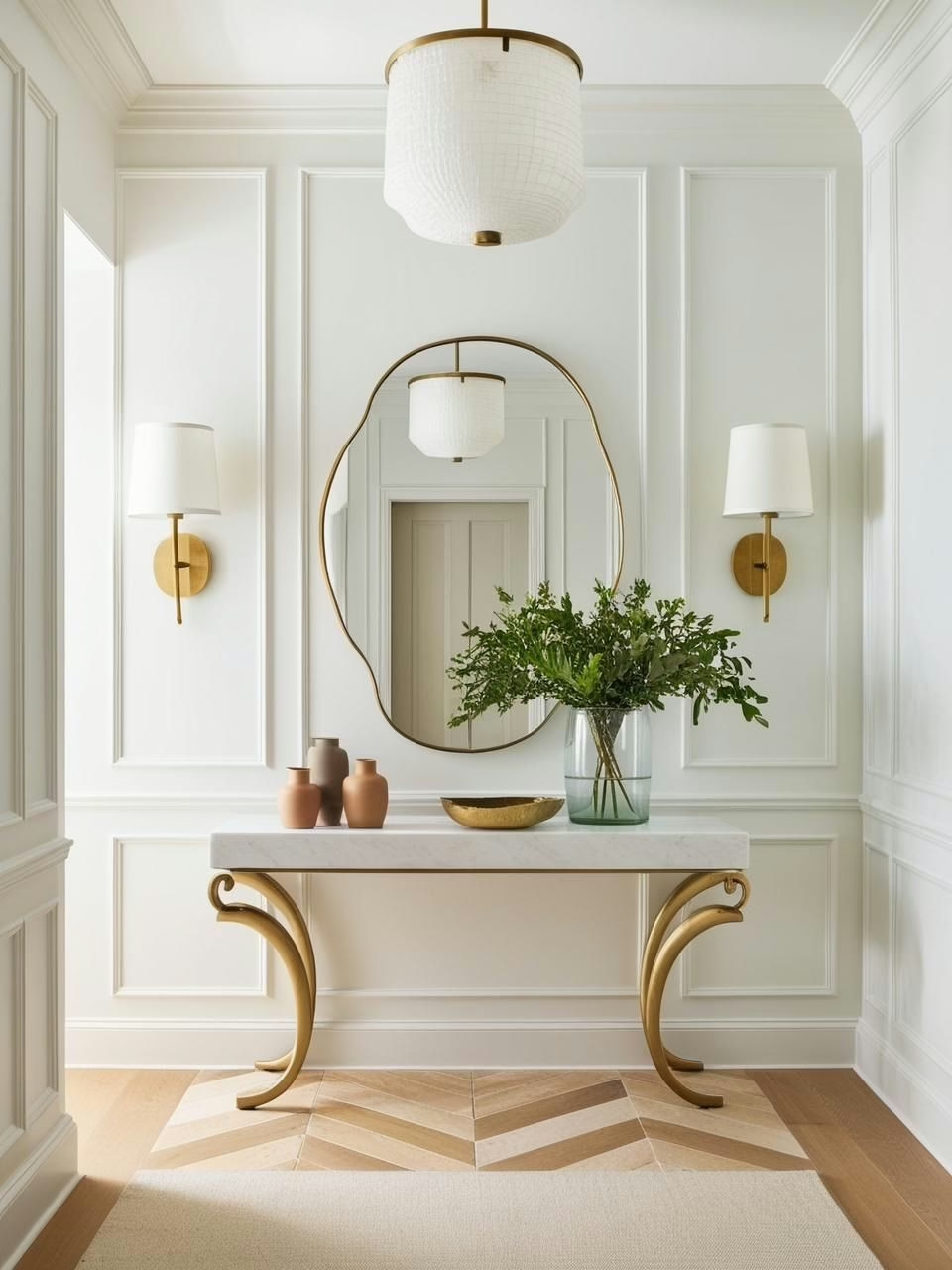
Creating a Rococo-Style Wall Treatment with Murals and Frescoes
Let me tell you about the time I first saw a genuine Rococo fresco up close. Picture me, standing there with my mouth open, probably looking ridiculous, but completely mesmerized by these clouds that seemed to float right off the ceiling. That’s the magic of Rococo murals – they can transform a flat wall into something that feels almost alive. And guess what? We can bring that same magic into our homes (minus the palace-sized budget!).
A Little Bit of History (But Make It Fun)
Remember when everyone was obsessed with creating feature walls? Well, the Rococo period did it first – and they did it with style! These weren’t just any old murals; they were like Instagram-worthy moments before Instagram existed. Picture dreamy scenes with cherubs floating through pastel skies, or lush gardens that seem to go on forever. The cool part? They used these murals to make rooms feel bigger and more airy, which is exactly what we’re all trying to do with our spaces today!
Making It Work Today
You don’t need a palace to rock this look (see what I did there?). Here are some modern takes on Rococo murals that absolutely work:
- The Garden Scene: Think soft, romantic florals climbing up your walls. I once saw someone do this in a powder room and it was absolutely magical
- The Cloud Effect: Perfect for ceilings or upper walls – it’s like having your own little piece of sky
- Modern Mythology: Updated versions of classical scenes, but with a twist. Think metallic accents or unexpected color palettes
- Abstract Interpretations: Taking those classic Rococo swirls and curves but making them more contemporary
Working With a Professional (Or Going Solo!)
Here’s the thing about murals – they can be a bit… intimidating. I learned this the hard way when I thought, “How hard can it be?” (Narrator: It was very hard). So let me save you some trial and error:
If You’re Hiring a Pro:
- Look for someone who gets your vision. When I finally found my muralist, she immediately understood what I meant by “Rococo but make it 2024”
- Ask to see their previous work, especially anything with detailed patterns
- Don’t be shy about discussing budget upfront – custom murals are an investment, but there are usually options at different price points
For the DIY Brave Souls:
- Start small! Maybe try a single wall or even just an accent area
- Temporary wallpaper can be your best friend. I’ve seen some amazing Rococo-inspired designs that give you that fresco feel without the commitment
- Consider stencils for detailed patterns – they’re like training wheels for aspiring muralists
- Paint markers can be great for adding those fine Rococo details
Pro Tips (Learned the Hard Way)
- Always, always do a test patch first. Those colors that looked perfect on your phone screen might hit different in real life
- Consider the lighting in your room – it can completely change how a mural looks throughout the day
- Think about scale – what looks good on Pinterest might feel overwhelming in your actual space
The best part about modern Rococo murals? There are no strict rules. You can go full Marie Antoinette if that’s your vibe, or just add subtle touches that whisper rather than shout. Either way, you’re creating something unique that tells your story – and isn’t that what great design is all about?
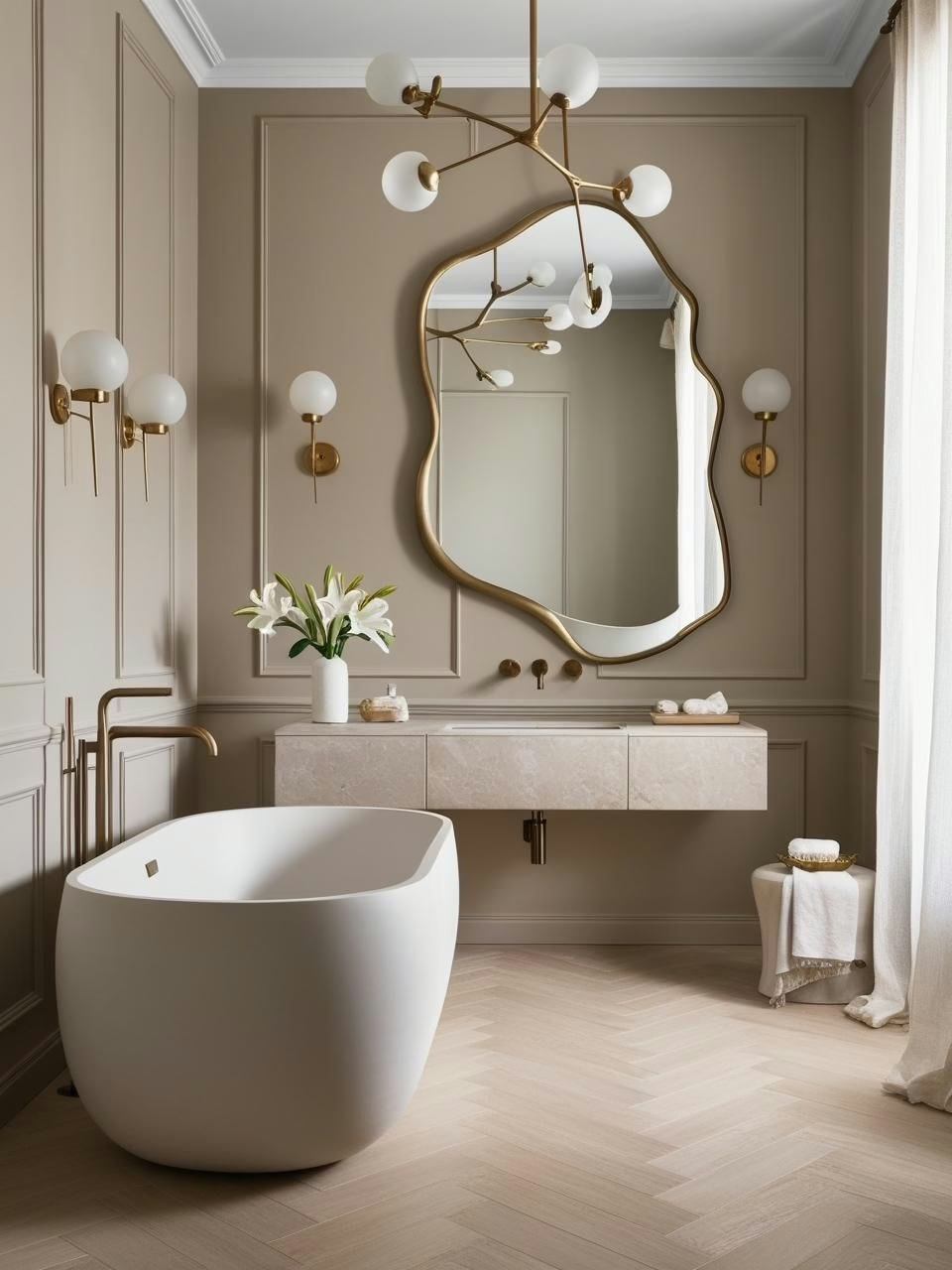
Using Intricate Moldings and Wall Panels to Enhance Rococo Style
Let’s dive into the world of moldings and wall panels – or as I like to call them, the jewelry of architecture. Full disclosure: my first attempt at installing picture frame molding involved a protractor, three YouTube tutorials, and maybe a tiny meltdown. But hey, that’s how we learn, right?
The Game-Changing Magic of Molding
Think of moldings as the ultimate room glow-up. Remember those “before and after” transformations that make you do a double-take? That’s often the magic of well-placed molding at work. In Rococo design, moldings weren’t just pretty extras – they were the whole show! They used them to:
- Create rhythm and movement across walls (like a visual symphony)
- Frame specific areas (imagine your wall wearing a gorgeous necklace)
- Add depth and dimension (because flat walls are so last century)
Getting Started Without Losing Your Mind
Listen, I’ve been there – staring at a wall with a pile of molding pieces, wondering if I’ve made a huge mistake. But here’s what I’ve learned works:
For the DIY Brave:
- Start with one wall (trust me on this one – I learned the hard way)
- Invest in a good laser level. That $50 might save your sanity
- Mock up your design with painter’s tape first. I once skipped this step and… well, let’s just say there was a lot of patching involved
For Those Calling in the Pros:
- Have inspiration photos ready (but be realistic – that palace in Versailles had a slightly different budget)
- Ask about material recommendations – a good installer is worth their weight in gold leaf
- Get clear about timeline and prep work needed. Nobody wants surprise walls-torn-apart days
Materials: Making the Right Choice
Here’s where things get exciting (yes, I’m a design nerd, and I’m owning it!):
Wood Molding:
- The classic choice
- Great for traditional looks
- Takes paint like a dream
- But heads up: it can be pricey and sensitive to humidity
Polyurethane:
- My go-to for detailed designs
- More affordable than wood
- Surprisingly durable
- Pro tip: higher-end ones are practically indistinguishable from wood
Plaster:
- The traditionalist’s choice
- Amazing for curved walls
- Creates the most authentic look
- Fair warning: installation is definitely not a DIY project
The “Why Didn’t Anyone Tell Me This Before?” Tips
- Always buy extra material (that moment when you’re one piece short and it’s discontinued… nightmare!)
- Paint most moldings before installing – your neck will thank you later
- For renters: removable options exist! I’ve seen some genius uses of peel-and-stick molding that look surprisingly legit
Remember, whether you’re going full French palace or just want to add a touch of elegance to your powder room, moldings can be your best friend. They’re like the perfect accessory that pulls your whole outfit together – except for your walls!
And hey, if your first attempt isn’t perfect? Join the club! Some of my favorite rooms started as “learning experiences” (code for: mild disasters that turned into opportunities for creativity). The key is starting somewhere and being willing to learn as you go.
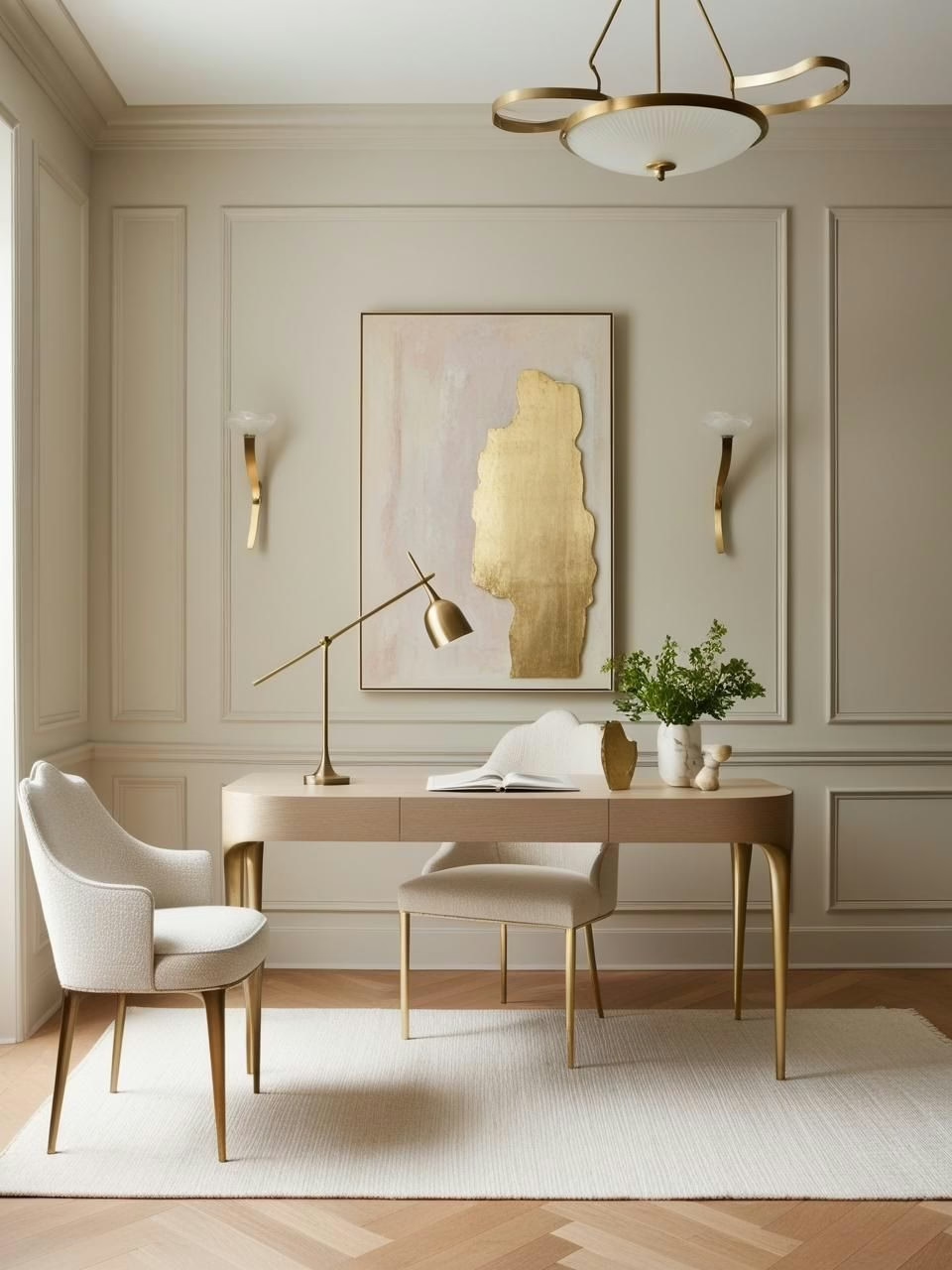
Integrating Rococo Revival into Modern Spaces
You know that moment when you realize your grandmother’s ornate mirror actually looks amazing next to your streamlined West Elm sofa? That’s the sweet spot we’re talking about! Let me share something – I once spent months afraid to mix my inherited Rococo-style console with my modern decor until a designer friend walked in and said, “This is exactly what your space needs!” Sometimes we just need permission to break the “rules.”
The Modern Mix-Master’s Guide
First things first – forget everything you’ve heard about styles needing to “match.” Think of decorating like hosting a dinner party: sometimes the most interesting conversations happen when you mix up the guest list! Here’s what I’ve found works:
- Let statement pieces breathe. That gorgeous gilded mirror needs some clean, modern space around it – like giving the best storyteller at your party room to shine
- Create conversation zones where old meets new. Try pairing a sleek modern sofa with a Rococo-style side table. They’re like unlikely friends who end up having the best chats
- Use color as your connector. A modern chair in the same tone as your Rococo artwork? Chef’s kiss
Finding the Sweet Spot
Remember that time everyone was doing the minimalist thing, and you felt guilty about loving your ornate pieces? Here’s the truth: the best rooms have contrast. It’s all about balance:
- 70/30 is your friend: Try keeping about 70% modern/minimal and 30% Rococo. I learned this after my “more is more” phase (spoiler: more was actually too much)
- Use negative space intentionally. Think of it as giving your Rococo pieces their own spotlight
- Layer textures, not just styles. A sleek velvet modern sofa can totally vibe with an ornate gilded mirror
Making It All Work Together
Here’s the exciting part – creating your own unique style story. Some tried-and-true approaches:
In Larger Spaces:
- Create distinct zones where each style can shine
- Use consistent colors to tie everything together
- Keep the background (walls, floors) neutral to let your pieces pop
In Smaller Spaces:
- Pick one Rococo statement piece as your star
- Use modern pieces in clean lines to balance the space
- Add small Rococo-inspired accessories strategically
The “Aha!” Moments
Want to know my favorite trick? Use art as your bridge. A contemporary photograph in an ornate Rococo-style frame? That’s the kind of unexpected pairing that makes a room feel curated rather than decorated. Or try this: use modern lighting fixtures with traditional Rococo elements – it’s like adding a fresh playlist to a classic party.
Remember, the goal isn’t to create a museum – it’s to create a space that feels authentically you. If you love both your IKEA sofa and your great-aunt’s ornate mirror, guess what? They probably love each other too. They just needed someone (you!) to make the introduction.
The best part about mixing Rococo with modern style? There’s no single “right” way to do it. Your space should tell your story, even if that story includes both 18th-century-inspired carvings and mid-century modern chairs. After all, aren’t the most interesting homes the ones that keep you guessing?
Unlock Designer-Perfect Colors in Minutes
Browse my curated collection of interior color palettes—tailored for today’s most loved design styles.
Conclusion
Let’s wrap this up with some real talk about bringing Rococo Revival into your home. You know what I love most about this style journey we’ve been on? It’s shown us that even the most ornate, historically-rich design elements can feel totally at home in our modern spaces.
Here’s what I hope you’re taking away from all this: Rococo Revival isn’t about recreating a palace (unless that’s your jam – in which case, go for it!). It’s about finding those special pieces that make your heart skip a beat and giving them space to shine in your home. Whether it’s that gorgeous gilded mirror that caught your eye at the flea market, or the way your modern sofa looks surprisingly perfect against a wall of intricate molding – it’s all about creating your own unique story.
Remember when we talked about mixing old and new, and how sometimes the “rules” are meant to be broken? That’s the real magic here. Some of the most beautiful rooms I’ve seen started with someone saying, “I know this sounds crazy, but what if…”
So here’s my challenge to you: Start small if you need to, but start somewhere. Maybe it’s adding that ornate mirror you’ve been eyeing, or perhaps it’s experimenting with some wall moldings in your powder room. Whatever speaks to you, go for it! And if your first attempt isn’t quite right? Well, join the club! Some of my favorite design decisions came after a few “learning opportunities” (that’s designer-speak for mistakes we grew from).
Because at the end of the day, great design isn’t about perfection – it’s about creating spaces that make you feel something. And if there’s one thing Rococo Revival knows how to do, it’s making a room feel special.
So what do you say? Ready to add a little Rococo magic to your space? Trust me, your modern home might just be waiting for that touch of historical glamour to make it truly sing.
Curated Wall Art for Elegant Homes
Bring softness, texture, and intention into your home with digital wall art inspired by wabi-sabi, abstract forms, and muted watercolors. Every piece is crafted to create stillness and beauty—whether you’re styling a gallery wall or a minimalist nook.